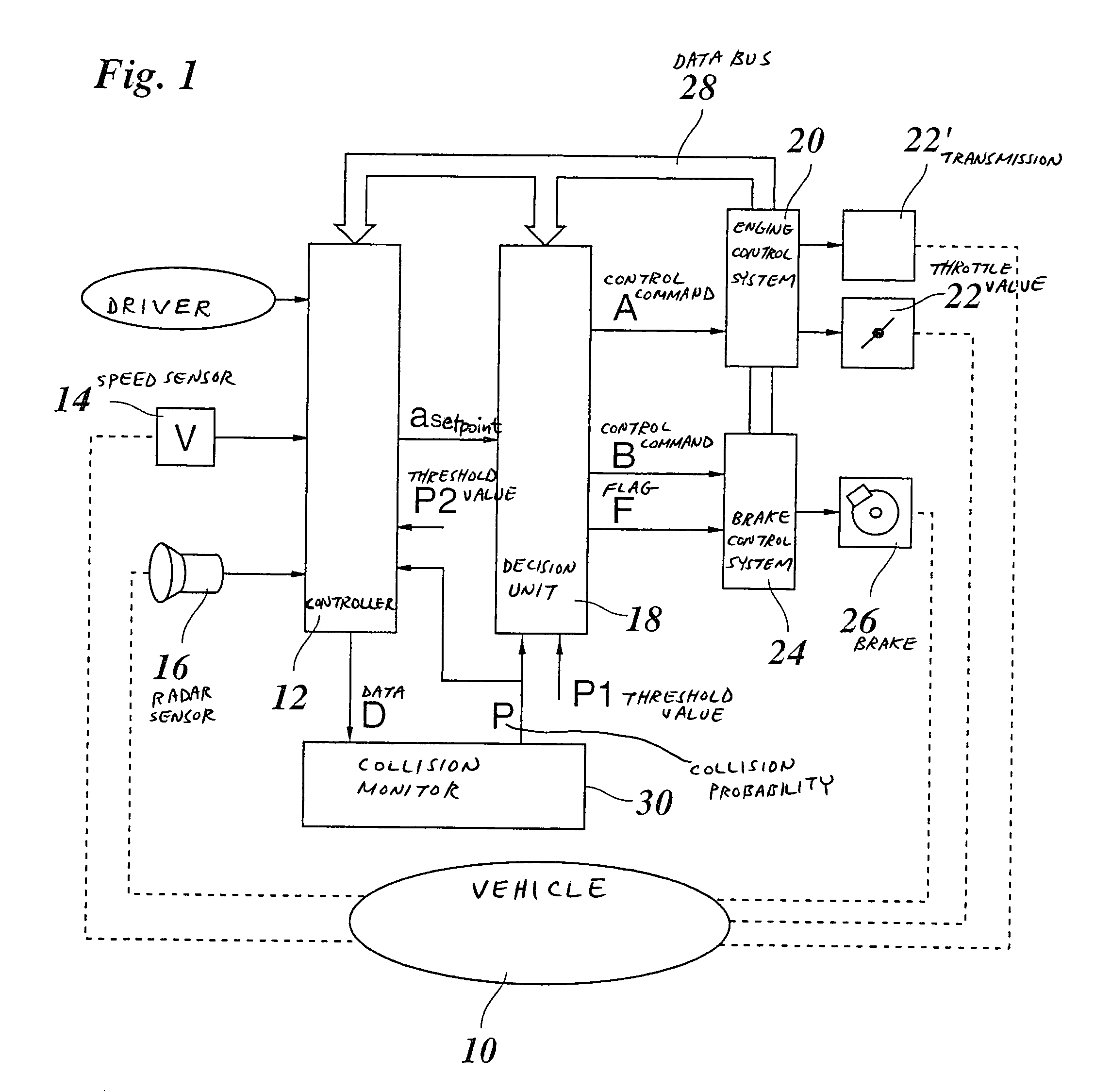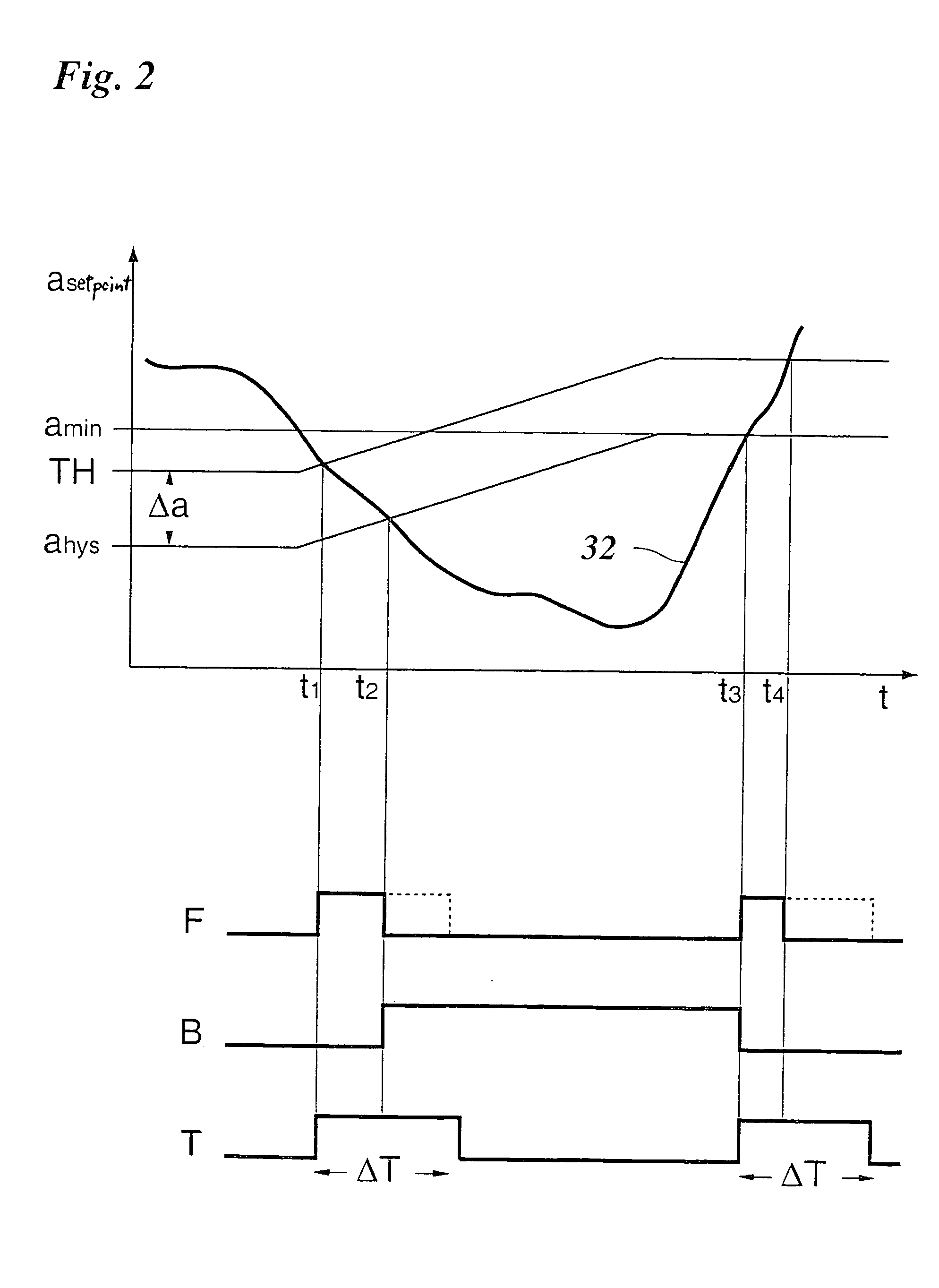Method for preventing collisions involving motor vehicles
a technology for motor vehicles and collisions, applied in the direction of tractors, instruments, using reradiation, etc., can solve the problems of braking intervention, inability to reliably prevent collisions, and affecting the comfort and safety of the occupants of the vehicle,
- Summary
- Abstract
- Description
- Claims
- Application Information
AI Technical Summary
Benefits of technology
Problems solved by technology
Method used
Image
Examples
Embodiment Construction
[0019]FIG. 1 symbolically shows a motor vehicle 10, the speed of which is regulated with the help of an ACC system. A controller 12 receives a signal from a speed sensor 14 indicating the actual speed of the vehicle. In addition, a positioning device is mounted on the front of the vehicle; in the present example, this is a radar sensor 16 which reports distance and relative velocity data on objects located in front of the vehicle to controller 12. Radar sensor 16 preferably has a certain angular resolution, so the azimuth angle of the objects located may also be detected and reported to controller 12. It is possible in this way for the radar sensor 16 and / or controller 12 to differentiate vehicles traveling ahead in one's own lane from vehicles in other lanes and stationary targets at the edge of the road surface. If vehicles driving in front are in one's own lane, the vehicle immediately in front is selected as a target object and the speed of vehicle 10 is regulated so as to maint...
PUM
 Login to View More
Login to View More Abstract
Description
Claims
Application Information
 Login to View More
Login to View More - R&D
- Intellectual Property
- Life Sciences
- Materials
- Tech Scout
- Unparalleled Data Quality
- Higher Quality Content
- 60% Fewer Hallucinations
Browse by: Latest US Patents, China's latest patents, Technical Efficacy Thesaurus, Application Domain, Technology Topic, Popular Technical Reports.
© 2025 PatSnap. All rights reserved.Legal|Privacy policy|Modern Slavery Act Transparency Statement|Sitemap|About US| Contact US: help@patsnap.com



